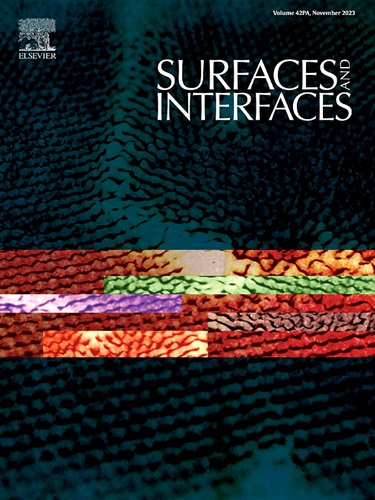Facet-dependent co-binding of Fe(II) and nalidixic acid on hematite
IF 5.7
2区 材料科学
Q2 CHEMISTRY, PHYSICAL
引用次数: 0
Abstract
Hematite, known for its varied crystal morphologies, often coexists with Fe(II) and significantly influences the environmental fate of organic contaminants. However, the interfacial binding reactivity of Fe(II)-hematite towards redox-inactive contaminants remains poorly understood. This study investigates the adsorptive interactions of nalidixic acid (NA), a prototypical redox-inactive quinolone antibiotic, with hematite nanostructures. Specifically, we compared the NA adsorption onto hematite nanoplates (HNPs) exposing primarily the {001} facets and nanorods (HNRs) with substantial exposure of both {001} and {110} facets, under various pH and Fe(II) concentrations. Through batch adsorption experiments, Fourier transform infrared spectroscopy, and surface complexation modeling, we demonstrated that NA predominantly interacts with surface Fe sites via bidentate coordination. HNRs exhibit higher NA adsorption capacity than HNPs, with adsorption densities of 0.47 and 0.77 NA/nm² for the {001} and {110} facets, respectively. HNRs also exhibit higher Fe(II) adsorption capacity than HNPs due to higher affinity of Fe(II) for {110} facets compared to {001} facets. Additionally, the presence of Fe(II) was found to enhance NA adsorption onto hematite in a facet-dependent manner, influenced by both Fe(II) concentration and pH levels. These findings are directly relevant to the environmental behavior of quinolones, particularly in oxic-anoxic interface, highlighting the importance of mineral facets in contaminant sequestration and mobility.

赤铁矿上铁(II)与萘啶酸的面依赖性共结合
本文章由计算机程序翻译,如有差异,请以英文原文为准。
求助全文
约1分钟内获得全文
求助全文
来源期刊

Surfaces and Interfaces
Chemistry-General Chemistry
CiteScore
8.50
自引率
6.50%
发文量
753
审稿时长
35 days
期刊介绍:
The aim of the journal is to provide a respectful outlet for ''sound science'' papers in all research areas on surfaces and interfaces. We define sound science papers as papers that describe new and well-executed research, but that do not necessarily provide brand new insights or are merely a description of research results.
Surfaces and Interfaces publishes research papers in all fields of surface science which may not always find the right home on first submission to our Elsevier sister journals (Applied Surface, Surface and Coatings Technology, Thin Solid Films)
 求助内容:
求助内容: 应助结果提醒方式:
应助结果提醒方式:


